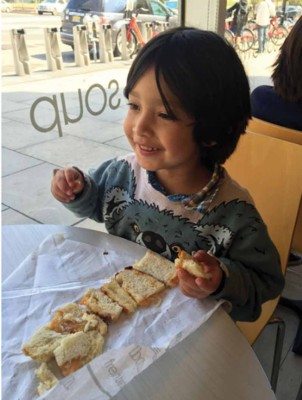This year, I sent my youngest child to preschool.
Over the summer, we had the luxury of hours of cuddle time, reading books together, jumping on the trampoline and building endless Lego and wood block structures.
But now, it’s time for him to start his preschool journey—and I’m feeling a little hesitant about a few things.
First, I am really going to miss him every day. What if other kids say harsh things to him and his feelings get hurt? What if he trips and falls? Or, what if he has an accident and the teachers don’t comfort him as well as I can?
I’m worried about a lot, but I’m also very excited.
Noé’s preschool is diverse in a number of ways. Students are as young as 2 years old or as old as 5. The student population is also made up of kids from different socio-economic backgrounds, as well as different ethnic and language backgrounds. Additionally, some families have a generational history of high levels of education while other may or may not have attained high school diplomas.
Every day, the teachers set up learning stations where students can create, arrange, construct, converse, act out, write, draw or play together.
But what’s most important is the way the teachers treat the children. They care about the children’s social-emotional health and they take the time to chat with me when they have a concern. I notice them watching the students closely, asking them questions and listening closely to how the children responds. Sometimes I see students get into arguments, usually about who gets to be included in a game or who gets to use a particular object. I notice the teachers mindfully observing. Will the children work through the problem on their own, or will they need a little guidance to help them get there? I notice their kind smiles and their gentle, yet firm, voices.
As an English/Spanish bilingual family, we know that Noé’s language and culture are regarded as an asset at his school. His Cambodian teacher is even trying to learn some Spanish to connect with him.
I also appreciate how children with autism, Down syndrome, and other special learning needs are included in his class and participate in play groups the same as other children. Noé is growing and learning in a classroom where everyone’s differences are celebrated and their contributions valued.
These formative years will allow Noé to be able to understand people better, to understand how a really inclusive community looks and feels, and understand how he’s a part of that community. That’s important to us.
Unfortunately, Noé’s preschool isn’t free, and this is a reality for many parents across the country. As a middle-class working family, we struggle to be able to pay the tuition, but we know it’s worth it.
Letting go of my kid as he ventures into an exciting new stage is tough, but I also know how right it is to send Noé to preschool. This is his time to grow and flourish and I can’t wait to root for him along the way.
Thea Fabian and her husband, Eduardo, have three children—Noé, 4, Emerson, 8, and Inés, 12. Fabian blogs for the U.S. Department of Education.



















